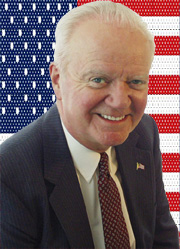Public Relations: Use Its Core Strength
 by Robert A. Kelly
by Robert A. KellyDo you take the core strength of public relations into account as you manage those communications tactics?
Because if you don't, you're missing the sweet-spot of public relations. The communications tactics you employ must work together to create desired behavioral change in certain groups of people important to the success of your organization. In the end, a sound public relations strategy combined with effective tactics leads directly to the bottom line - perceptions altered, behaviors modified, employer/ client satisfied.
The fact is that NO organization - business, non-profit or public sector - can succeed today unless the behaviors of its most important audiences are in-sync with the organization's objectives.
For your organization, that means public relations professionals must modify somebody's behavior if they are to help hit your objective and earn a paycheck - everything else is a means to that end.
Which is why, when public relations goes on to successfully create, change or reinforce public opinion by reaching, persuading and moving-to-action those people whose behaviors affect the organization, it accomplishes its mission.
How can we be so certain? Question: how can you measure the results of an activity more accurately than when you clearly achieve the goal you set at the beginning of that activity? You can't. It's pure success when you meet that goal.
Public relations is no different. The client/employer wants our help in altering counterproductive perceptions among key audiences which almost always change behaviors in a way that helps him or her get to where they want to be.
Now, to achieve that goal, public relations practitioners must be skilled in many tactical disciplines. Everything from media relations, public speaking and a dozen kinds of writing to financial communications, special events, issue tracking and crisis management, to name just a few.
But too often, the tendency is to see little beyond a tactic's immediate impact. For example, a speech and how it was received, a news release and how it was picked up and presented in a newspaper or on TV, or a special event and the audience's reaction.
Of course those reactions are understandable and shouldn't be lightly dismissed. But the question also must be asked, to what end are we applying those tactics?
Ask yourself this question: do we employ public relations tactics for the sheer pleasure of writing news releases, running special events, doing surveys or booking speeches? Obviously, the answer is no. We employ public relations so that, at the end of the day, somebody's behavior gets modified.
That leads us directly to the core strength of public relations: people act on their perception of the facts; those perceptions lead to certain behaviors; and something can be done about those perceptions and behaviors that leads to achieving an organization's objectives.
To assess those behavior changes and, thus, the degree of success the core public relations program has achieved, look for evidence that your tactics have actually changed behavior. Signs should begin showing up via Internet chatter, in print and broadcast news coverage, reports from the field, letters-to- the-editor, consumer and customer reactions, shareholder letters and comments from community leaders. Consider doing informal polls of employees, retirees, industrial neighbors and local businesses as well as locating feedback from suppliers as well as reaction from elected officials, union leaders and government agencies.
The point of this article is that the core strength places a special burden on each tactic selected to carry the message to a target audience: does it/will it make a tangible, action-producing contribution towards altering target audience perceptions and behaviors? If not, it should be dropped and replaced with a tactic that does.
That way, only the strongest tactics will be used allowing public relations to apply its core strength to the challenge at hand: create, change or reinforce public opinion by reaching, persuading and moving-to-action those people whose behaviors affect the organization.
What do I believe the employer/client wants from us? I believe s/he wants us to apply our special skills in a way that helps achieve his or her business objectives. But no matter what strategic plan we create to solve a problem, no matter what tactical program we put in place, at the end of the day we must modify somebody's behavior if we are to earn our money.
But the best part is that when the behavioral changes become apparent, and meet the program's original behavior modification goal, three things have occurred.
One, the public relations program is a success. Two, by achieving the behavioral goal you set at the beginning, you are using a dependable and accurate public relations performance measurement. And three, when our "reach, persuade and move-to-action" efforts produce a visible, and desired, modification in the behaviors of those people you wish to influence, you are using public relations' core strength to its very best advantage.
|
About the Author |
| Bob Kelly, public relations consultant, was director of public relations for Pepsi-Cola Co.; AGM-Public Relations, Texaco Inc.; VP-Public Relations, Olin Corp.; VP-Public Relations, Newport News Shipbuilding & Drydock Co.; director of communications, U.S. Department of the Interior, and deputy assistant press secretary, The White House. mail to: bobkelly@TNI.net |
Tell others about
this page:
Comments? Questions? Email Here